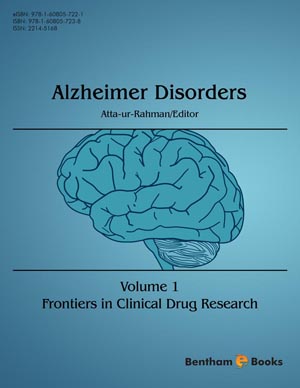Abstract
Compelling evidence indicates that Alzheimer’s disease (AD) has multiple causes, and its effective treatment should fully address the multi factor nature of the disease. Accordingly, to achieve better efficacy, recent drug development for AD therapy has been moving from single-targeting to multi-targeting, drugs which simultaneously modulates several key disease-related/pathways. In this chapter, we explore some examples of neurogenic molecules which can reduce amyloid beta (Aβ) production, prevent oxidative stress and tau hyperphosphorylation, restore metal dyshomeostasis and also possess neuroprotective/neurorestorative effects. We also discuss the diverse mechanisms contributing to the biological activities of these neurogenic molecules, including regulation of Aβ processing and tau phosphorylation; activation of protein kinase signaling pathways; and modulation of cell survival genes and proteins.
Keywords: Abeta-lowering agent, antioxidant, ladostigil, rasagiline, methylene blue, M30, multitarget drugs, Alzheimer's disease, Parkinson's disease, metal chelators, neurogenic, amyloid beta, tau hyperphosphorylation, monoamine oxidase inhibitors, acetylcholinesterase inhibitors, neuroprotective, neurorestorative, disease modifying drugs, Alzheimer's therapy, neurodegeneration and metal dyshomeostasis.






















